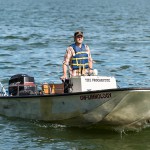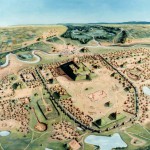Tag Rivers
As the river rises: Cahokia’s emergence and decline linked to Mississippi River flooding
As with rivers, civilizations across the world rise and fall. Sometimes, the rise and fall of rivers has something to do with it. At Cahokia, the largest prehistoric settlement in the Americas north of Mexico, new evidence suggests that major flood events in the Mississippi River valley are tied to the cultural center’s emergence and ultimately, to its decline.
Thinking ‘big’ may not be best approach to saving large-river fish
Large-river specialist fishes - from giant species like paddlefish and blue catfish, to tiny crystal darters and silver chub - are in danger, but researchers say there is greater hope to save them if major tributaries identified in a University of Wisconsin–Madison study become a focus of conservation efforts.



